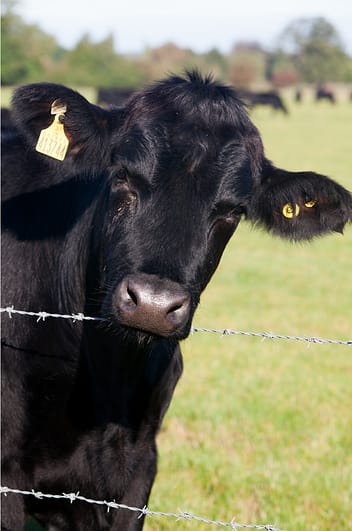Professional Advice: Bagley Risk Management Strategies
Professional Advice: Bagley Risk Management Strategies
Blog Article
Secret Variables to Consider When Finding Livestock Danger Security (LRP) Insurance
When examining choices for Livestock Risk Defense (LRP) insurance policy, numerous crucial variables require careful consideration to make sure efficient danger administration in the agricultural industry. Selecting the appropriate protection options customized to your specific animals procedure is paramount, as is understanding how exceptional prices associate with the degree of defense used. Furthermore, the eligibility criteria for various kinds of livestock and the adaptability of the policy to adjust to changing conditions are critical aspects to evaluate. The efficiency and transparency of the cases process can considerably influence the overall experience and monetary end results for animals manufacturers. By tactically browsing these crucial factors, manufacturers can safeguard their financial investments and reduce possible dangers successfully.
Insurance Coverage Options
When taking into consideration Livestock Danger Security (LRP) insurance policy, it is vital to comprehend the numerous insurance coverage choices offered to minimize threats in the agricultural field. Animals Risk Defense (LRP) insurance offers various coverage choices tailored to fulfill the varied demands of livestock producers. Bagley Risk Management. Among the primary protection choices is cost protection, which secures against a decrease in market value. Producers can pick the insurance coverage degree that lines up with their rate risk management goals, allowing them to protect their operations versus possible economic losses.
One more important insurance coverage alternative is the endorsement period, which determines the size of time the protection is in impact. Producers can choose the endorsement period that best fits their production cycle and market conditions. In addition, coverage degrees and prices vary based upon the type of livestock being guaranteed, providing manufacturers the versatility to personalize their insurance policy plans according to their certain needs.
Comprehending the different protection options offered under Animals Threat Security (LRP) insurance policy is vital for producers to make informed decisions that properly safeguard their livestock operations from market unpredictabilities.
Premium Expenses

Livestock Risk Defense (LRP) insurance policy gives crucial coverage alternatives customized to minimize threats in the agricultural field, with a significant element to think about being the computation and structure of premium prices. These consist of the type and number of livestock being insured, the coverage degree selected, the current market rates, historical price data, and the length of the protection duration.
Premium expenses for LRP insurance coverage are typically determined based on actuarial information and risk assessment models. Insurers assess historical information on livestock costs and production expenses to determine an ideal premium that mirrors the level of danger involved. It is necessary for livestock producers to thoroughly review premium prices and coverage choices to guarantee they are effectively protected against potential monetary losses due to negative market problems or unexpected occasions. By recognizing how superior prices are calculated and structured, producers can make educated decisions when picking the best LRP insurance coverage plan for their procedure.
Eligible Animals
The resolution of qualified livestock for Livestock Risk Defense (LRP) insurance policy protection involves careful consideration of particular criteria and features. Livestock types that are typically eligible for LRP insurance policy consist of feeder cattle, fed lambs, livestock, and swine.
Feeder livestock, for instance, are typically qualified for LRP protection if they fall within specified weight ranges. Lambs are an additional category of livestock that can be taken into consideration for LRP insurance coverage, with variables such as weight and age playing an important role in establishing their eligibility.
Prior to picking LRP insurance for livestock, manufacturers should very carefully assess the eligibility criteria detailed by the insurance policy copyright to ensure their animals satisfy the needed requirements for coverage.
Policy Adaptability
Policy Discover More Here versatility in Animals Threat Defense (LRP) insurance coverage permits manufacturers to customize protection to match their details demands and risk management techniques. This flexibility empowers animals producers to tailor their insurance plan based on factors such as the kind of animals they have, market problems, and private danger tolerance levels. One essential aspect of policy adaptability in LRP insurance policy is the capability to pick insurance coverage degrees that straighten with the manufacturer's economic goals and run the risk of exposure. Manufacturers can pick coverage degrees that safeguard them against potential losses as a result of changes in animals prices, guaranteeing they are sufficiently insured without paying too much for unneeded protection. Furthermore, LRP insurance policy uses versatility in plan duration, enabling manufacturers to select protection periods that best fit their click for source manufacturing cycles and advertising timelines. By offering adjustable options, LRP insurance policy enables manufacturers to successfully handle their threat exposure while safeguarding their animals procedures against unforeseen market volatility.
Cases Process
Upon experiencing a loss or damage, producers can initiate the cases process for their Livestock Threat Protection (LRP) insurance coverage by without delay calling their insurance coverage supplier. It is essential for producers to report the loss as quickly as feasible to quicken the claims process. When reaching out to the insurance coverage supplier, producers will certainly require to provide comprehensive info regarding the occurrence, consisting of the day, nature of the loss, and any relevant documentation such as veterinary records or market prices.

After the assessment is total, the insurance policy copyright will certainly choose concerning the case and connect the outcome to the producer. The producer will get compensation according to the terms of their Livestock Danger Defense (LRP) insurance coverage policy if the case is approved. It is vital for manufacturers to be familiar with the claims procedure to make sure a smooth experience in the occasion of a loss

Conclusion
To conclude, when selecting Animals Threat Security (LRP) insurance policy, it is important read what he said to take into consideration insurance coverage alternatives, premium expenses, qualified livestock, plan adaptability, and the insurance claims process. These vital factors will certainly assist make certain that breeders and farmers are sufficiently protected versus prospective risks and losses related to their livestock procedures. Making an informed choice based upon these considerations can inevitably cause better financial security and comfort for livestock producers.
Animals Danger Security (LRP) insurance uses different coverage alternatives tailored to meet the varied requirements of animals producers.The resolution of eligible animals for Livestock Danger Protection (LRP) insurance policy protection involves careful consideration of particular criteria and features.Policy versatility in Animals Danger Defense (LRP) insurance permits producers to tailor coverage to match their specific requirements and take the chance of management approaches.Upon experiencing a loss or damage, producers can launch the claims process for their Animals Threat Protection (LRP) insurance policy by promptly contacting their insurance policy supplier.In conclusion, when choosing Animals Threat Security (LRP) insurance policy, it is essential to think about insurance coverage options, premium expenses, eligible livestock, plan adaptability, and the cases process.
Report this page